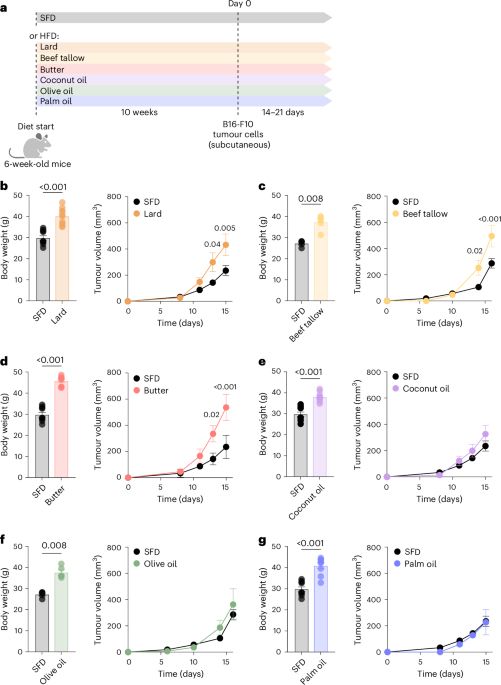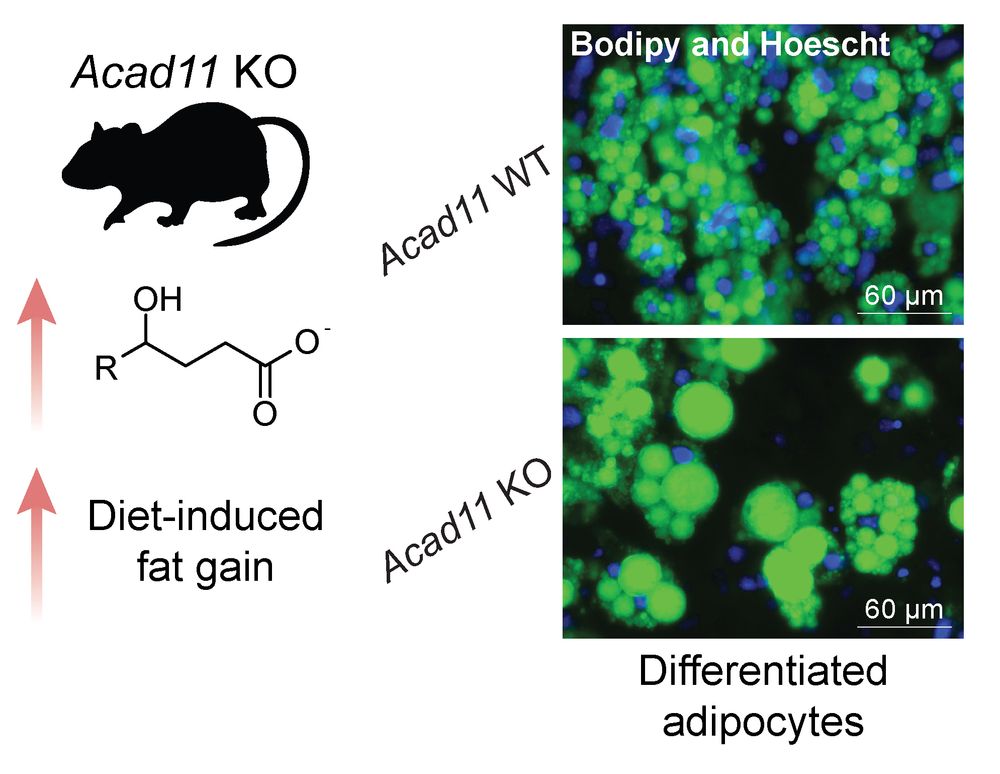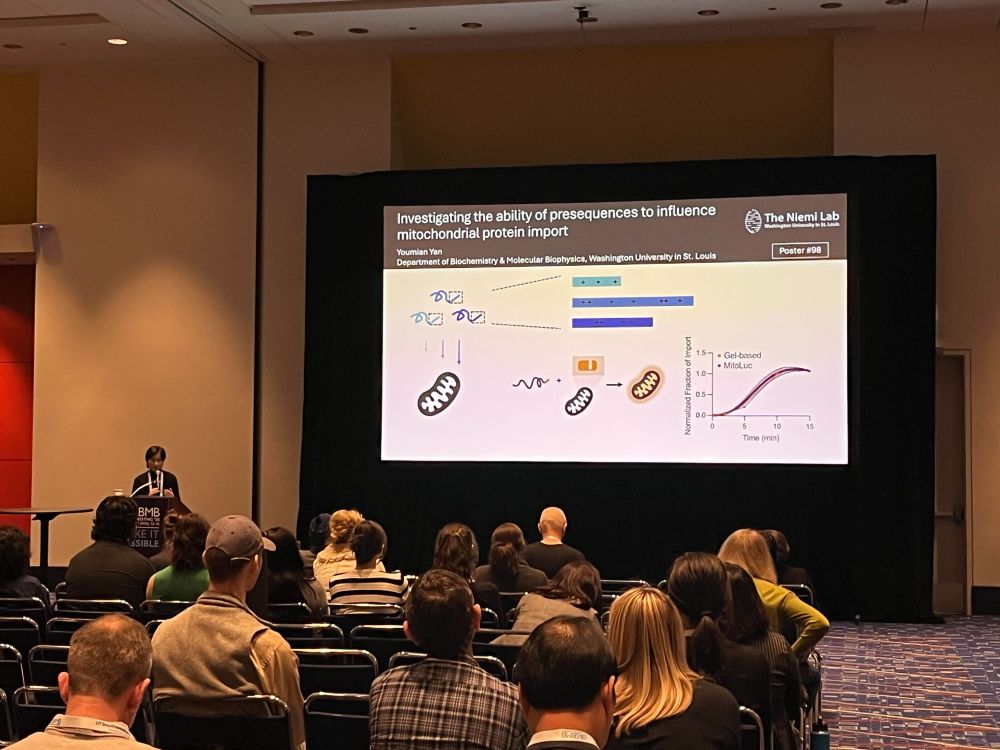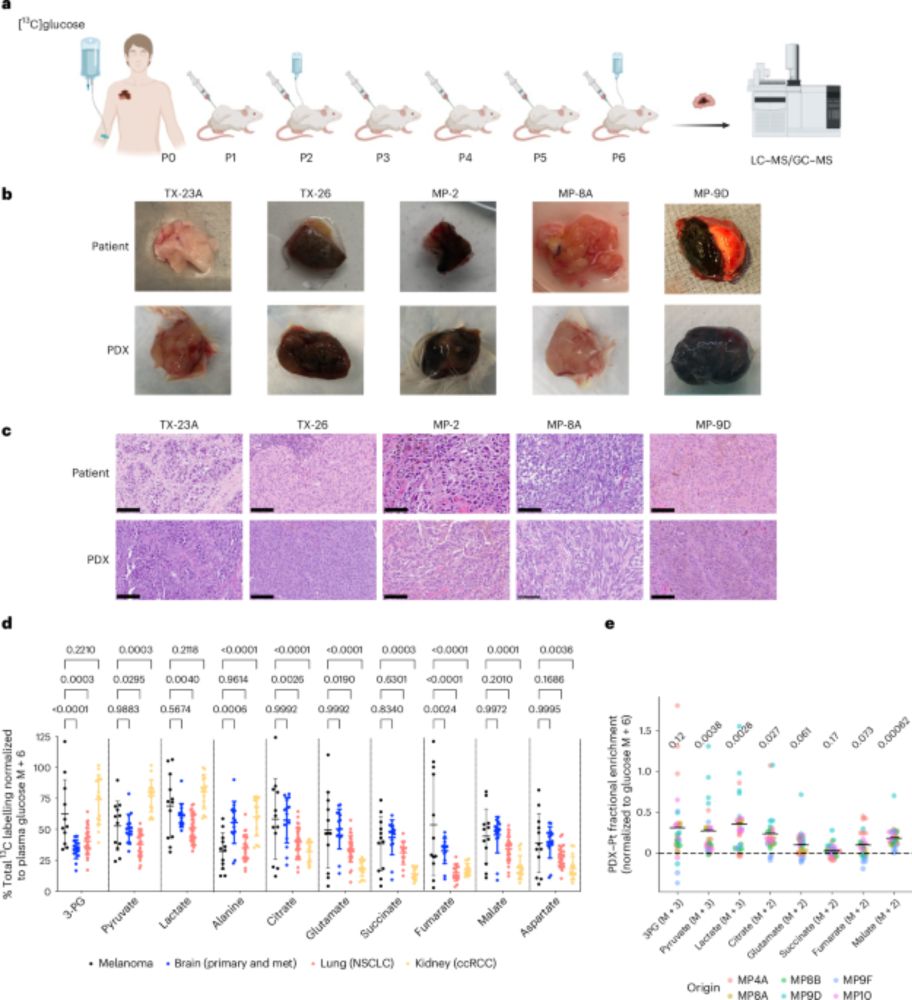I received this award as a second year student, and it was transformative and a big part of the reason I persisted. They are making things harder just for no reason.
I remember the days when we recognized that STEM fields were a worthy national investment 🤦🏾♀️
26.09.2025 21:21 — 👍 23 🔁 8 💬 0 📌 0

Organelle-Targeted Laurdans Measure Heterogeneity in Subcellular Membranes and Their Responses to Saturated Lipid Stress
Organelles feature characteristic lipid compositions that lead to differences in membrane properties. In cells, membrane ordering and fluidity are commonly measured using the solvatochromic dye Laurdan, whose fluorescence is sensitive to lipid packing. As a general lipophilic dye, Laurdan stains all hydrophobic environments in cells; therefore, it is challenging to characterize membrane properties in specific organelles or assess their responses to pharmacological treatments in intact cells. Here, we describe the synthesis and application of Laurdan-derived probes that read out the membrane packing of individual cellular organelles. The set of organelle-targeted Laurdans (OTL) localizes to the ER, mitochondria, lysosomes, and Golgi compartments with high specificity while retaining the spectral resolution needed to detect biological changes in membrane ordering. We show that ratiometric imaging with OTLs can resolve membrane heterogeneity within organelles as well as changes in lipid packing resulting from inhibition of trafficking or bioenergetic processes. We apply these probes to characterize organelle-specific responses to saturated lipid stress. While the ER and lysosomal membrane fluidity is sensitive to exogenous saturated fatty acids, that of mitochondrial membranes is protected. We then use differences in ER membrane fluidity to sort populations of cells based on their fatty acid diet, highlighting the ability of organelle-localized solvatochromic probes to distinguish between cells based on their metabolic state. These results expand the repertoire of targeted membrane probes and demonstrate their application in interrogating lipid dysregulation.
The 4 chemically targeted Laurdan derivatives (for mitochondria, ER, lyso/endosomes, and the Golgi) that we published last year are now available (at a pretty reasonable price) from Avanti Polar Lipids (cat #880194, 880197, 880193, 880196). These have been very popular! pubs.acs.org/doi/full/10....
15.08.2025 15:57 — 👍 47 🔁 14 💬 1 📌 1
Grrrr. We don't call protein phosphorylation or acteylation epiproteomics. So let's not call RNA modification epitranscriptomics. In fact, realisitically, epigenetics has so many definitions, some of them non-overlapping, that this whole epi-XXXX (genetics/genomics whatever) is just not helping us.
21.08.2025 07:36 — 👍 124 🔁 27 💬 12 📌 5

The source of dietary fat influences anti-tumour immunity in obese mice - Nature Metabolism
This study shows that animal-based high-fat diets accelerate tumour growth and impair anti-tumour response to melanoma in obese mice, whereas plant-based high-fat diets do not.
This was a labor of love requiring lots of teamwork over years, repeating in 3 locations! Thanks to all the lab over the years, giving their time generously to this team project, & our wonderful collaborators. The source of fat matters for anti-tumor immunity 🐄🐖🧈🌴🫒🥥
www.nature.com/articles/s42...
28.07.2025 15:02 — 👍 84 🔁 27 💬 7 📌 0
JCI -
What’s on the menu?: metabolic constraints in the pancreatic tumor microenvironment
Super excited to share new review on metabolic stress and adaptations in pancreatic cancer to these stresses from @cssheehan.bsky.social
jci.org/articles/vie... 1/6
19.07.2025 14:59 — 👍 26 🔁 12 💬 1 📌 0

What’s Your Story? 2025 Contest Winners
The Scientist is excited to announce the winners of our 2025 science writing contest!
Super excited for Niemi lab grad student Hannah Pletcher, who placed second in the recent "What's Your Story" Sci-comm writing contest put on by The Scientist! Read more about the contest, as well as Hannah's winning entry, here: www.the-scientist.com/what-s-your-...
#ProudPI
16.07.2025 18:56 — 👍 20 🔁 3 💬 0 📌 0
Thank you, CJ! Hope you and your lab are well.
23.06.2025 12:51 — 👍 1 🔁 0 💬 1 📌 0
Yes!! WOOHOO!
22.06.2025 23:44 — 👍 1 🔁 0 💬 0 📌 0
Very excited to see this work with @edreesrashan.bsky.social published in @natsmb.nature.com ! #metabolism #AmazingACADs 🤩
19.06.2025 19:10 — 👍 4 🔁 2 💬 1 📌 0
It was a privilege to work on a project that allow us to span multiple disciplines and reveal new fundamental biology. Thank you to our funding support, incl. from the NIH, @hhmi.org , and institutional support @washumedicine.bsky.social @uwbiochem.bsky.social @morgridgeinstitute.bsky.social
22.06.2025 23:41 — 👍 3 🔁 0 💬 0 📌 0
We hope our findings will spur future studies to clarify how these enzymes and the regulation of 4-HAs underlie human health and disease. There is much to learn about how 4-HAs contribute to whole body metabolic flexibility and their tissue- and organelle-specific functions!
22.06.2025 23:38 — 👍 1 🔁 0 💬 1 📌 0

Lastly, we wanted to determine how dysfunctional 4-HA catabolism affects physiology and generated ACAD11 KO mice. Disruption of ACAD11 in vivo leads to accumulation in plasma 4-HAs, higher susceptibility to diet-induced fat gain, and dysfunctional adipogenesis. 🧐
22.06.2025 23:36 — 👍 2 🔁 0 💬 1 📌 0

If they have similar activities, are ACAD10/11 redundant in cells? Our metabolomics results suggest they are not! ACAD10 is in mitochondrial and ACAD11 is peroxisomal, and we propose that their differential localization enables cells to catabolize a wider range of 4-hydroxy acids.
22.06.2025 23:35 — 👍 2 🔁 0 💬 1 📌 1

Second, 4-phosphoacyl-CoA serves as a substrate for the ACAD domains, which convert it into 2-enoyl-CoA using a “redox-neutral” FAD-dependent mechanism. ACAD10/11 are unable to oxidize saturated acyl-CoAs and use a specialized motif to recognize 4-phosphoacyl-CoA.🤯🤯
22.06.2025 23:35 — 👍 1 🔁 0 💬 1 📌 0

How do they pull off the job? First, they use N-terminal kinase domains that specifically recognize and phosphorylate 4-hydroxyacyl-CoA. This phosphorylation is crucial for priming the elimination of the “FAO-incompatible” 4-hydroxyl group.
22.06.2025 23:34 — 👍 2 🔁 0 💬 1 📌 0

Using rigorous biochemistry/cryo-EM, we demonstrate that ACAD10/11 convert 4-hydroxyacyl-CoAs into 2-enoyl-CoA intermediates that can enter the FAO pathway. They both conduct a multi-step reaction that centers around a key (and 🧊very cool🧊) PHOSPHORYLATED acyl-CoA intermediate.
22.06.2025 23:33 — 👍 2 🔁 1 💬 1 📌 0

Motivated to understand the biology of 4-hydroxy acids (4-HAs) in mammals, we sought to discover and study the enzymes responsible for their metabolism. It was a 3AM bacterial homology analysis that led us to think of ACAD10 and ACAD11 as likely candidates for this pathway (see Figure 1)
22.06.2025 23:32 — 👍 2 🔁 0 💬 1 📌 0

Fatty acid B-oxidation (FAO) is the primary pathway by which fatty acids are catabolized. However, some fatty acids are modified and need to be fixed to become “FAO-compatible”. One such class is 4-hydroxy acids, which are present in diet and living systems including humans.
22.06.2025 23:31 — 👍 2 🔁 0 💬 1 📌 0

Opinion | Science Suffers With Trump’s Funding Freeze
America’s scientific enterprise demands reliable stewardship, not destabilizing political intervention.
My father-in-law, Jack Strominger, and I wrote a letter to the @wsj.com editor about the current threats to science due to Trump's funding freeze. Please repost! www.wsj.com/opinion/scie...
21.04.2025 18:21 — 👍 180 🔁 142 💬 2 📌 7

a person is holding a red object in their hand .
ALT: a person is holding a red object in their hand .
ATTENTION
I am hearing from several sources that "NIH" sent out termination notices for most or all "diversity" awards yesterday to coincide with the new Notice.
If you were affected by this and are willing to share, please DM me or reach me on Signal (jeremymberg.78)
1/2
22.04.2025 11:48 — 👍 120 🔁 100 💬 4 📌 7

Niemi lab and @washubbsb.bsky.social graduate student Youmian Yan gave a fantastic presentation on her work at the @asbmb.bsky.social meeting in Chicago! #ProudPI (photo credit to @kerikozul.bsky.social)
14.04.2025 16:13 — 👍 27 🔁 12 💬 0 📌 0
I'm excited to present my work on the deorphanization of atypical lipid catabolic enzymes at #ASBMB25 on Monday April 14th. Please come to W179 to hear my flash-talk at 9:30AM and hang out with me at poster #350! #lipidtime
12.04.2025 20:58 — 👍 19 🔁 6 💬 0 📌 1
If you're at #ASBMB25, head over to Eddie's poster to hear about his cool work on lipid catabolic enzymes!
13.04.2025 15:34 — 👍 8 🔁 2 💬 0 📌 0
Epigenetic Inheritance, Neuroscience & anything biology-related
https://www.odedrechavilab.com/
TED: https://shorturl.at/myFTY
Huberman Lab Podcast: https://youtu.be/CDUetQMKM6g
Biochemist and cell biologist striving to improve human health | protein/lipid homeostasis | writer & consumer of fiction | science policy | views my own
Harvard Ph.D., Caltech / Amgen postdoc
Head of the Budin lab at UCSD (www.budinlab.com). Musings on thin layers of grease in our cells (and other topics). Lipids, cell membranes, biophysics, chem bio, evolution. 🏳️🌈
Koch Center for Integrative Research at MIT. Cancer biology. Mouse models. Tumor immunology.
Senior Scientist @ Thermo (San Jose)
Assistant Professor in Trinity College Dublin. A mitochondria and immunometabolism enthusiast. Views my own. 🇮🇪
John Yates studies proteins using the coolest method on the planet, mass spectrometry. Thoughts and musings are my own. EIC of the Journal of Proteome Research. https://www.scripps.edu/yates/
physician-scientist, author, editor
https://www.scripps.edu/faculty/topol/
Ground Truths https://erictopol.substack.com
SUPER AGERS https://www.simonandschuster.com/books/Super-Agers/Eric-Topol/9781668067666
Scientist in the Department of Molecular Biology at UT Southwestern Medical Center. We investigate mechanisms of tumorigenesis.
https://labs.utsouthwestern.edu/odonnell-lab
Wife & Mom 🤍 | HHMI Hanna Gray Fellow | Neuro PhD 🧠 UW-Madison | NINDSDiversity F99/K00 #DSPAN Alumna | Retina #Ephys 👁️ #BlackInNeuro | Founder @BlackInBiophys.bsky.social 💪🏾
Scientist| Illustrator| Co-founder @jkxcomics.bsky.social| Absurdity at its finest| The Gardiner of @thegardinerlab.bsky.social | she/her
👩🏾🔬 www.jayegardiner.com
🎨 www.jkxcomics.com
🧪 www.gardinerlab.science
Assistant Professor at the Institute of Metabolic Science, University of Cambridge, researching insulin action and glucose transporter traffic.
Cancer Biology PhD Candidate in the Lyssiotis Lab at the University of Michigan | Uridine & Pancreatic Cancer
Cell metabolism & mitochondria | HFSP-alumni & Postdoc at MSKCC
Associate Professor @ UW-Madison Biochemistry. www.limlab.org
Telomeres, Cryo-EM, Single-molecule Biophysics. Opinions are my own. 🇸🇬
Scientist & Associate Professor in Cell Biology @UFPR
linktr.ee/olgachaim PhD MSc Mol & Cell Bio| Biochemist & Pharmacist
Edits, always original. #TyposON #VAX
Alumna @UCSD-MolPharmaco @Unifesp-Biochem @LudwigSP-ExpOnco @UFPR-Pharmacy @EBTG/Danza-Ballet
Postdoc in the @rutterlab.bsky.social. Interests: cell signaling and metabolism.
GRA Eminent Scholar and Professor at University of Georgia. Into Systems Biology, genome editing, cell-cell interactions, glycobiology, metabolism, biologics, and lots of other cool science stuff. Http://lewislab.uga.edu
We are a cell biology lab at UT Southwestern Medical Center in Dallas, TX. We study lipid droplets and the organization of metabolism in cells. For more, please see our lab website: https://labs.utsouthwestern.edu/henne-lab

















